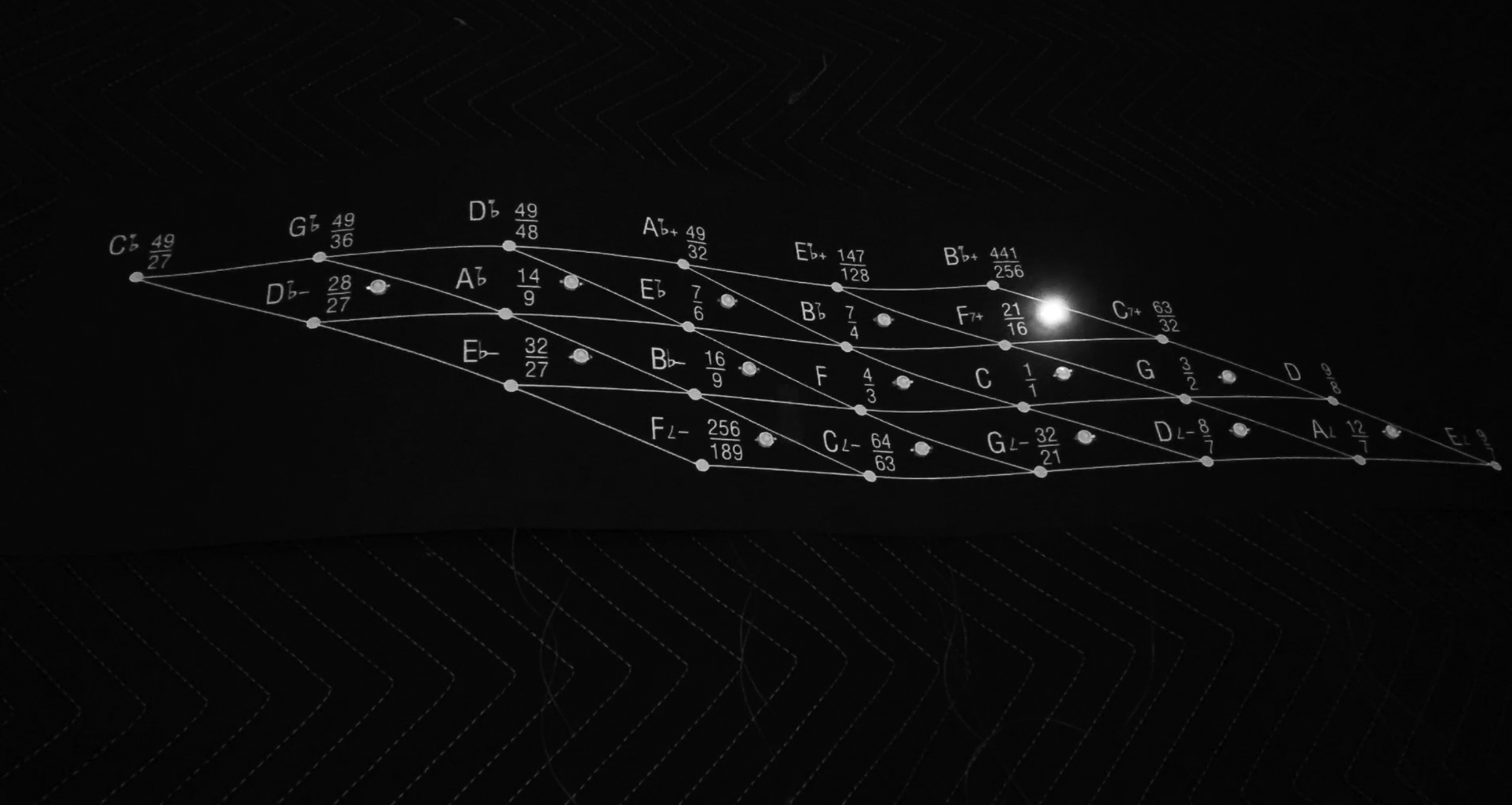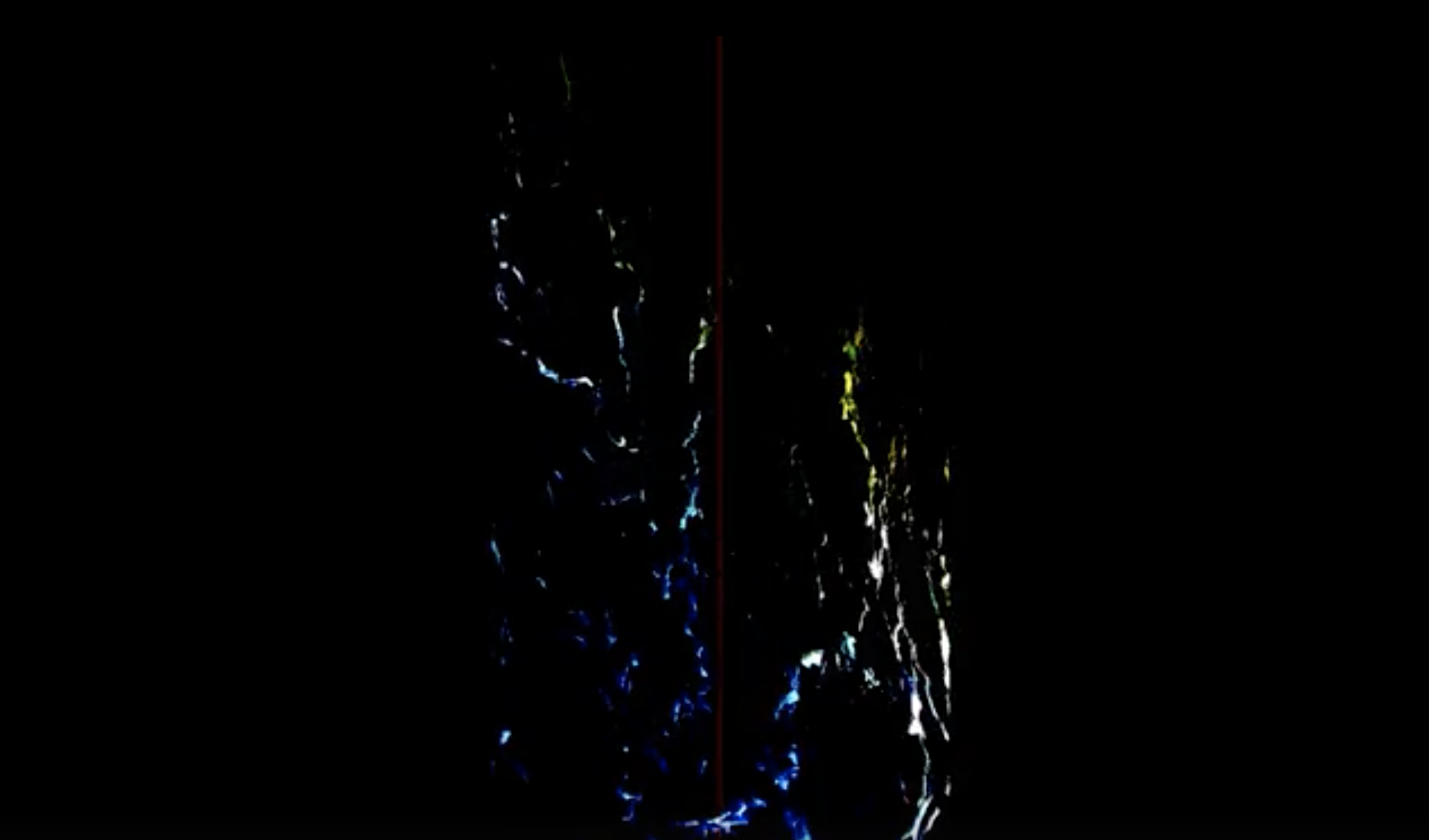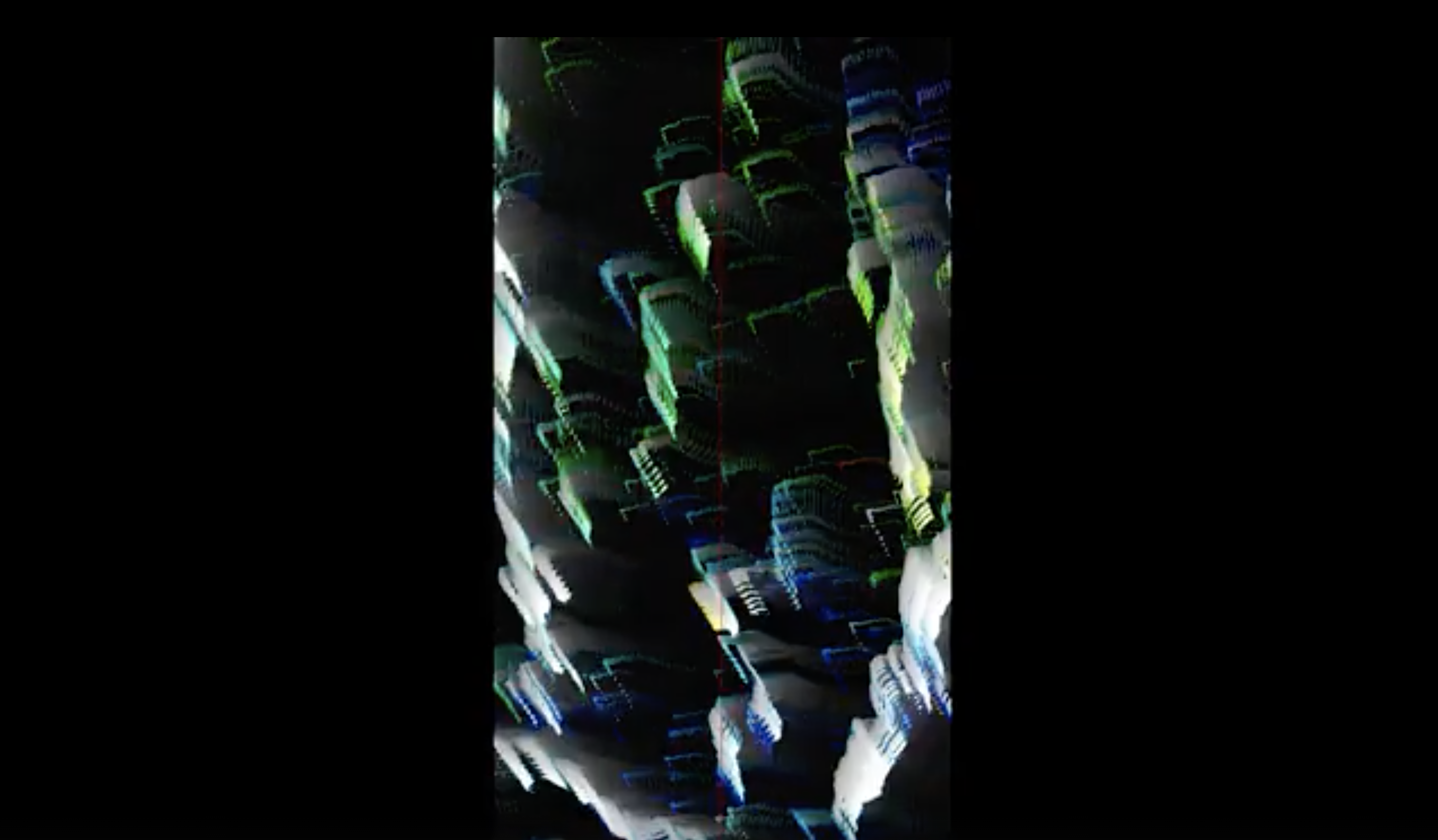INSTALLATION/ELECTRONIC ARTS/ROBOTICS
Intervallic space | on the poetics of meaning (2022)
![]()
A large black flag is hanging from the ceiling, and two opposite fans are blowing air towards it, both collaborating and competing into shaping it. Data ratios extracted from public polls - either as fixed data or constant flow - are expressed by the fan’s air flow. The poll questions and ratios are presented on a mini display in front of the piece.
The concept seeks to create a visual representation of the duality, fragility and inconstancy of public opinion/beliefs. Power interplay and interference are sharing space, as the wind and flag are also negotiating space and agency. Overall, the piece hopes to create a meditative yet engaging reflection around the opacity of information, bias, algorithmic justice and imagination - the latter invoked by the flag’s movement.
Intervallic space - excerpt [no sound]
Intervallic space | on the poetics of meaning (2022)
A large black flag is hanging from the ceiling, and two opposite fans are blowing air towards it, both collaborating and competing into shaping it. Data ratios extracted from public polls - either as fixed data or constant flow - are expressed by the fan’s air flow. The poll questions and ratios are presented on a mini display in front of the piece.
The concept seeks to create a visual representation of the duality, fragility and inconstancy of public opinion/beliefs. Power interplay and interference are sharing space, as the wind and flag are also negotiating space and agency. Overall, the piece hopes to create a meditative yet engaging reflection around the opacity of information, bias, algorithmic justice and imagination - the latter invoked by the flag’s movement.
Intervallic space - excerpt [no sound]
Interactive just intonation sound blanket (2021)

Acoustic blanket, Arduino, Max
The instalation allows the viewers to create immersive soundscapes, by triggering and layering a selection of just intonation intervals and custom ratios.
</>
A Fact Is The Destruction Of Meaning (2022)
![]()
![]()
The project explores transparency and opacity both as phenomena and metaphors. The interconnections and points of friction between the seemingly opposite notions are staged in a sculptural installation, where transparent, reflective and opacified surfaces are sharing space.
A Fact Is The Destruction Of Meaning (2022)

The project explores transparency and opacity both as phenomena and metaphors. The interconnections and points of friction between the seemingly opposite notions are staged in a sculptural installation, where transparent, reflective and opacified surfaces are sharing space.
SOUND ART
IFFT Poetry (2021)



Realized with Gabriel Lavoie Viau during a residency at Daïmon production Center, this experimentation comes from the idea of sonifying realities that would at first glance seem foreign to the sound world. We used Inverse Fast Fourier Transform [IFFT] to translate images into sound material.
FFT allows us to obtain the spectral content of a sound and informs us of the amount of energy contained in consecutive frequency blocks at a given time. This information is often represented in the form of spectrograms, which provide an overall view of a sound extract, displaying the variations of amplitudes of the various blocks of frequencies in time. It is possible to do the opposite, i.e. to translate the result of the analysis into a sound wave, and this with more or less definition loss.
In this experiment, we replaced the information related to the frequency blocks by the amount of brightness contained in a series of pixels. These pixels are located in the center of the image on a vertical line. The brighter the pixel, the more it activates the frequency block to which it is linked. Conversely, a black pixel will silence this frequency block. The visual source sent to the algorithm allows to activate or deactivate the frequency blocks of the Fast Fourier Transform and to vary their amplitude.
This study of an image-sound pair allowed us to better understand the functioning and the limits of the Inverse Fast Fourier Transform technique, opening the door to the transposition of other types of realities to sound, and the creation of other strange pairs.
Sonic Sympoiesis (2021)

I created this short sonic adventure in the context of a student presentation at Festival de la Imagen 2021 in Colombia. While researching, I was reading about concepts around the idea of interspecies, and got particularily interested into the multiple variations of <co-existing> and <making-with>.
While researching, I came across a video in which Donna Haraway gives a talk on the theme of phonocene, and mentions a story about the correspondence that her husband had with some of his students during the pandemic.
His students were inmates in a state prison. They were writing about their relationship with some birds that were getting into the halls of the cell blocks. They listened to them, and related to them. The birds had become part of their lives.
But since the pandemic lockdown, the prison officials managed to prevent the birds from coming in. Left with the enforced silence of pandemia, the young men were now excluded both from human and more than human contact.
I created this bird synthesis piece as a symbolic gesture of bringing back this relational worlding into their lives.
Bird singing recordings are sent to some sound descriptors (MuBu, IRCAM), then to a Machine Learning model (Deep Synth, programmed by Gabriel Lavoie Viau) which controls an additive synthesis patch in a modular synths setup.